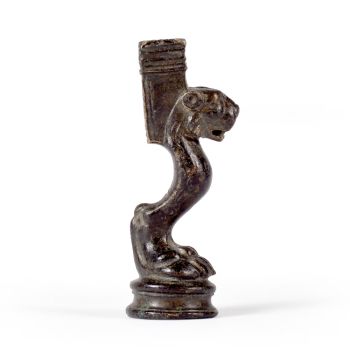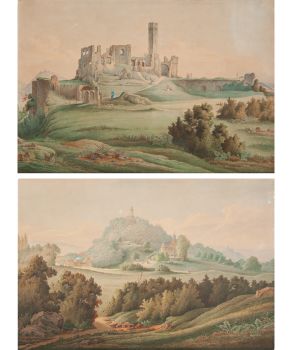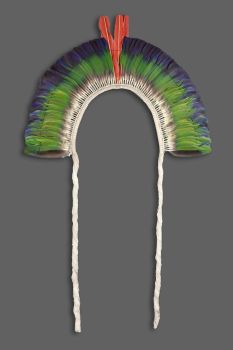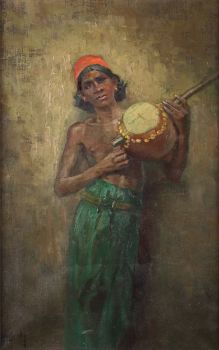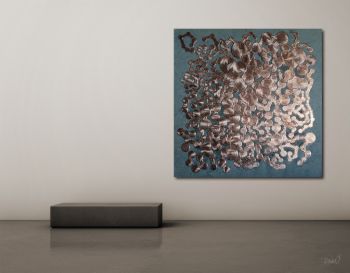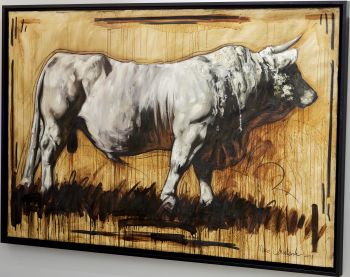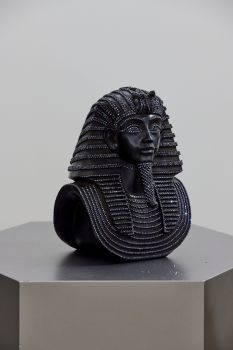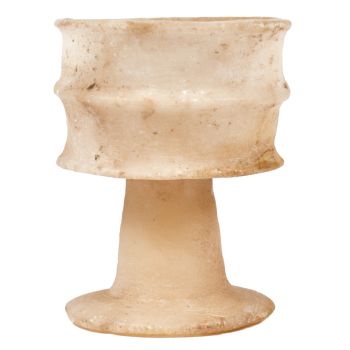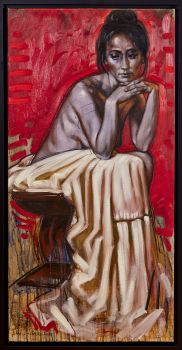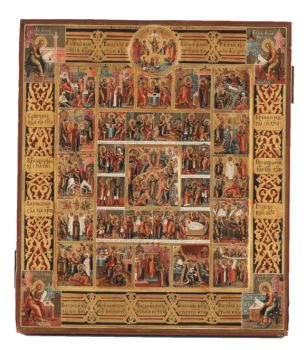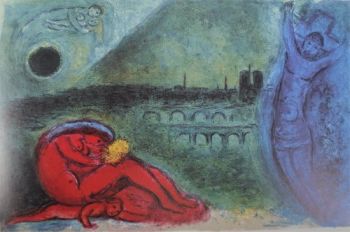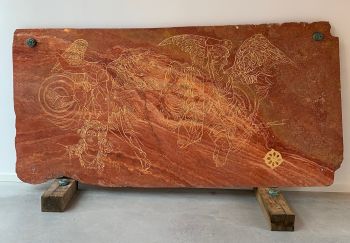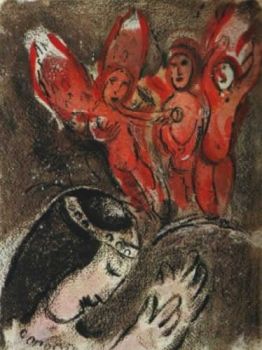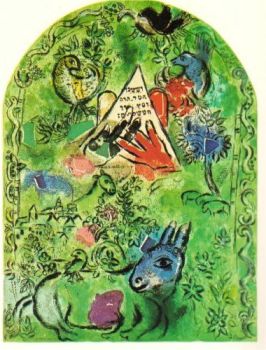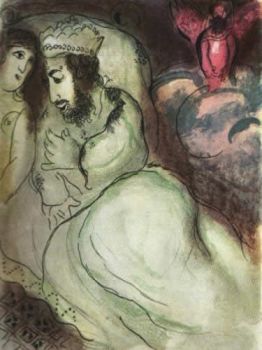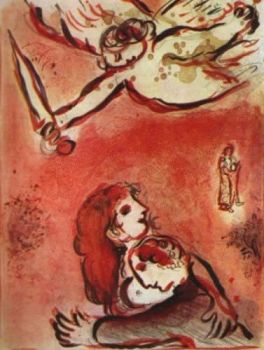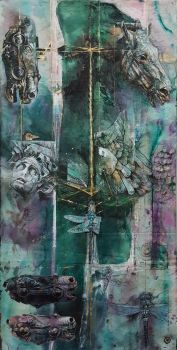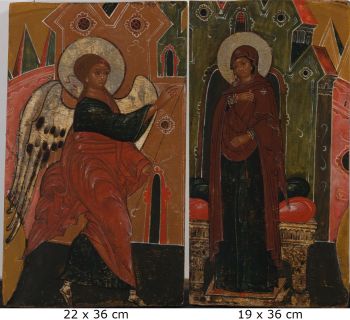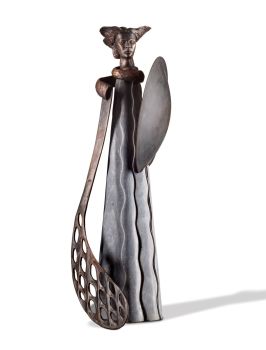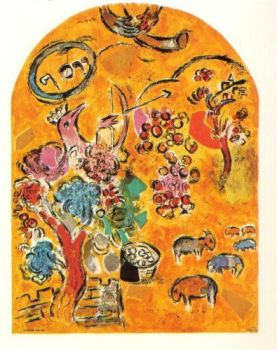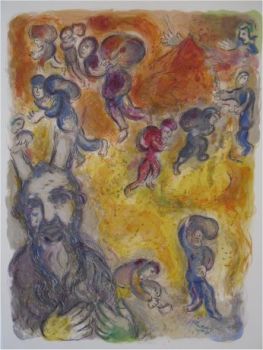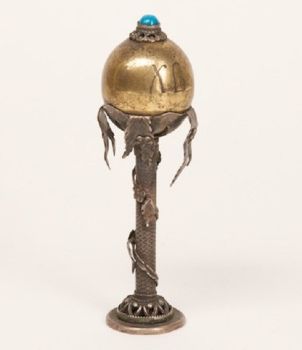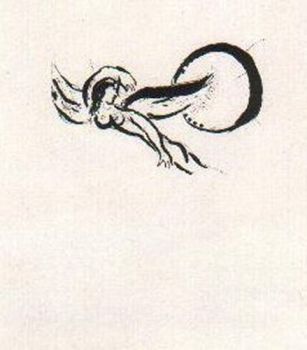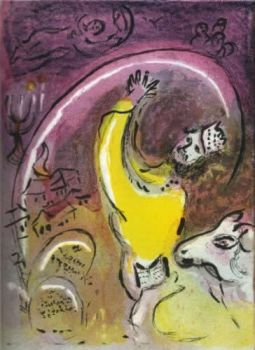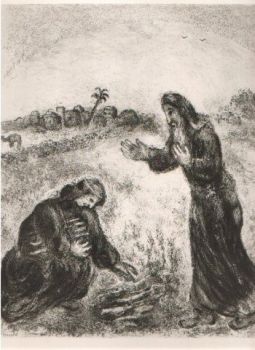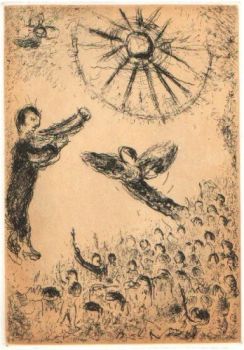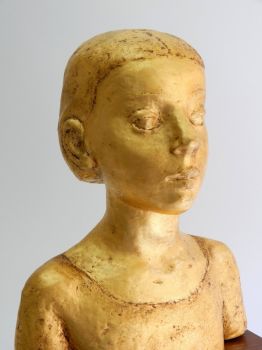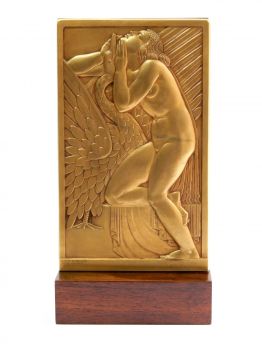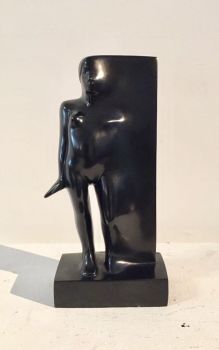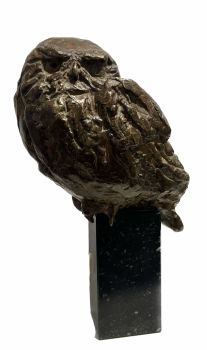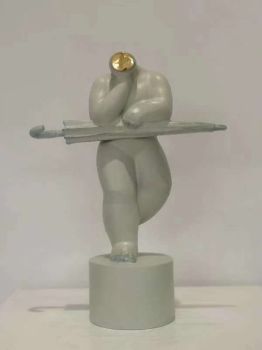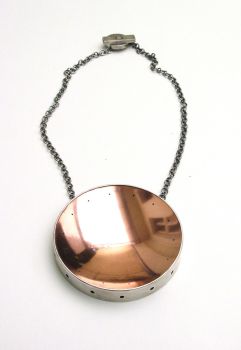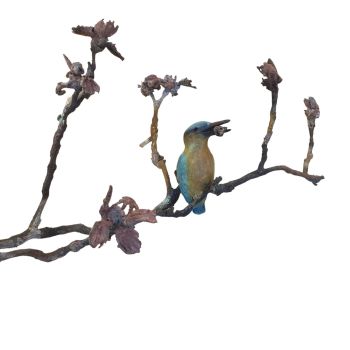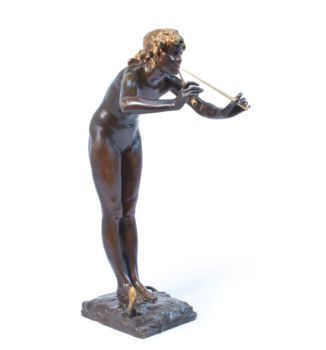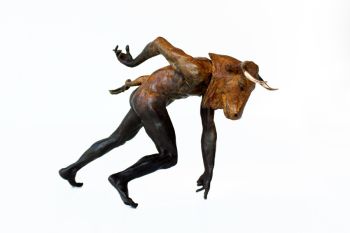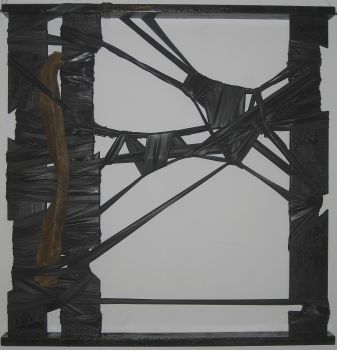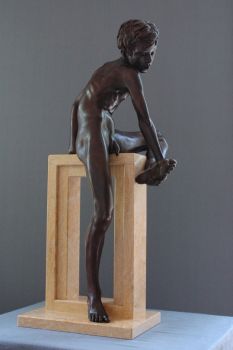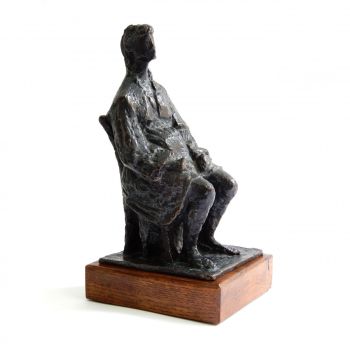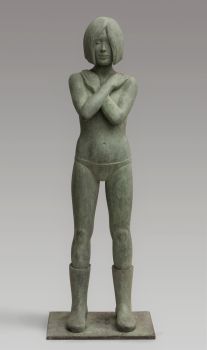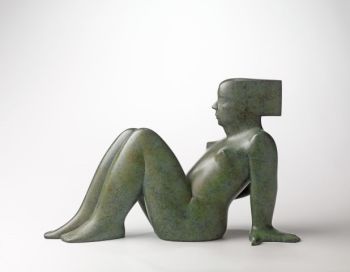Two rare figures of Sariputta and Moggallana 1800 - 1850
Unknown artist
Gilt bronzeMetal
43 cm
ConditionExcellent
€ 8.800
Famarte
- About the artworkThis pair of monks represents Sariputta and Moggallana, the Buddha’s two chief disciples. It belongs to a set of five monks, including three standing monks, who probably have been placed all together in the same temple as part of a shrine. The monks are elegantly seated on their knees in a symmetrical fashion. They are slender with a youthful compassionate face, half closed eyes with visible pupils, the fingers long and fine, the hairdo shaven. Their robes fall with elegant pleats along their body.
With two hands they delicately hold a bunch of grapes and a myrobalan fruit, which was used in the ayurvedic medicine as an anti-inflammatory and to heal wounds and scalds.
The thrones are bordered with pearls and nicely engraved with fine vertical lines.
You can only be touched by the sensitivity that emanates from this meditative temple sculpture.
Private Belgian collection since 2015 - About the artist
It might happen that an artist or maker is unknown.
Some works are not to be determined by whom it is made or it is made by (a group of) craftsmen. Examples are statues from the Ancient Time, furniture, mirroirs, or signatures that are not clear or readible but as well some works are not signed at all.
As well you can find the following description:
•“Attributed to ….” In their opinion probably a work by the artist, at least in part
•“Studio of ….” or “Workshop of” In their opinion a work executed in the studio or workshop of the artist, possibly under his supervision
•“Circle of ….” In their opinion a work of the period of the artist showing his influence, closely associated with the artist but not necessarily his pupil
•“Style of ….” or “Follower of ….” In their opinion a work executed in the artist’s style but not necessarily by a pupil; may be contemporary or nearly contemporary
•“Manner of ….” In their opinion a work in the style of the artist but of a later date
•“After ….” In their opinion a copy (of any date) of a work of the artist
•“Signed…”, “Dated….” or “Inscribed” In their opinion the work has been signed/dated/inscribed by the artist. The addition of a question mark indicates an element of doubt
•"With signature ….”, “With date ….”, “With inscription….” or “Bears signature/date/inscription” in their opinion the signature/ date/ inscription has been added by someone other than the artist
Are you interested in buying this artwork?
Artwork details
Related artworks
Unbekannter Künstler
An Amazon Indigenous Kayapo feather headdress1950 - 1960
Preis auf AnfrageZebregs & Röell - Fine Art - Antiques
Unbekannter Künstler
Eine JURUNA TRIBE FEATHER HEADDRESS1900 - 1950
Preis auf AnfrageZebregs & Röell - Fine Art - Antiques
1 - 4 / 12HUGO VILFRED VON PEDERSEN
Gadesanger fra Singapore (Musician from Singapore)1870 - 1959
Preis auf AnfrageZebregs & Röell - Fine Art - Antiques
Unbekannter Künstler
A Japanese bronze Hu flower vase, Edo / Meiji, 19th century19th century
Preis auf AnfrageMenken Works of Art
1 - 4 / 16Unbekannter Künstler
The bell of the VOC fortress in Jaffna, Sri Lanka1747
Preis auf AnfrageZebregs & Röell - Fine Art - Antiques
 Kuratiert von
Kuratiert vonDanny Bree
1 - 4 / 12Unbekannter Künstler
UITGEBREIDE FEESTDAGENIKOON MET PASSIECYCLUS19th century
Preis auf AnfrageHeutink Ikonen
Unbekannter Künstler
Russische Ikone, die eine erweiterte Deesis darstellt1600 - 1650
Preis auf AnfrageKunsthandel H.W.C. Dullaert Icons
Unbekannter Künstler
Silber Russische Präsentation Osterei1880 - 1899
Preis auf AnfrageH.W.C. Dullaert Art & Antiques Dealer
1 - 4 / 24Unbekannter Künstler
Chinese gilt bronze censer, Xuande mark, 18th century, Qing dynasty18th century
Preis auf AnfrageMenken Works of Art
1 - 4 / 24- 1 - 4 / 7


